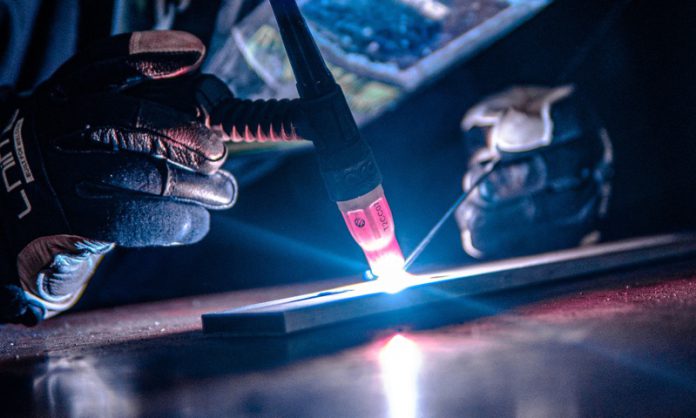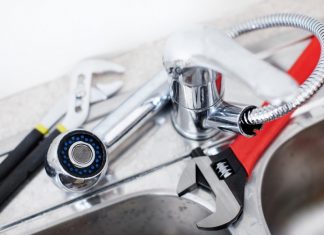You might mistakenly believe welding is a straight-forward job that only requires a blow-torch and one of those cool masks. Though welders need to use a welding mask, it’s not that simple and there are a few welding techniques advantageous for different jobs.
The two most common welding techniques are TIG and MIG welding. While MIG welding is more affordable and requires less specialization, welders can accomplish more intricate welding jobs with TIG welding.
This article explains the differences between MIG and TIG welding and the welding supplies each needs for a successful job. It also provides some insight into some of the other welding techniques commonly used. Continue reading to learn more about how TIG and MIG welding differ.
How They Work: MIG Vs. TIG Welding
The MIG Process
MIG welding goes by a few names. The most notable one is “metal inert gas” but you can also refer to it as “gas metal arc welding” GMAW. MIG welding uses a semi-automatic or automatic arc to weld with a continuous consumable wire electrode and a shielding gas. These are fed through lead to the welding gun (sometimes called a torch).
Since the wire electrode serves as the weld filler material, the wire diameter and composition varies. Which type you use depends on the type of metal, its thickness, and the joint configuration. Solid electrode wires come on different size spools and the MIG welder feeds it to the torch where it gets consumed. One of the key MIG welder settings is the wire feed speed which needs to be set to provide the right amount of weld metal for the intended joint.
The shielding gas used in MIG welding is typically a blend with a majority of argon and a minority of CO2. The blend promotes weld penetration and reduces the porosity of the bead.
Depending on what you’re welding, however, the shielding gas can have different compositions.
TIG Welding Process
Tungsten inert gas (TIG) is sometimes also referred to as gas tungsten arc welding and it uses an arc to weld. The key difference between TIG and MIG welding is that TIG welding uses a non-consumable tungsten electrode and a separate consumable filler material. With TIG welding, you must manually feed a rod of filler material into the weld puddle with your off-hand while the non-consumable tungsten electrode produces an arc.
Different Types of Welding
Aside from TIG and MIG welding, there are a few techniques that have been developed over the years to optimize the welding process. Arc welding uses electrical current to weld metals and MIG and TIG welding are both arc welding techniques. Friction welding melts bonding and bases through mechanical friction and is most often used for thermoplastics.
Electron beam welding uses steam and electronics to melt materials into a joint. The process must be completed in a vacuum and it is used for thicker materials and more complex jobs. Laser welding incorporates a high-speed laser to melt and join metals/thermoplastics. Resistance welding generates heat between the electrodes and rotating wheels to melt and join the base materials. Types of resistance welding include spot welding and seam welding.
Materials Used for MIG and TIG Welding
MIG and TIG welding can both be used for a wide range of metals. MIG welding is more suitable for thick materials and TIG welding better applies to thin materials. However, the most typical materials used for welding are aluminum, carbon steel, and stainless steel. Carbon steel stock is available along with many other metals at FastMetals.com
The Benefits of TIG Welding
TIG welding is a versatile welding method that enables industry professionals to join a wide range of small and thin materials, using a non-combustible tungsten electrode to heat the metal. iI can be used without a filler but it is much slower than MIG welding, which often leads to longer lead times and higher costs. But because it is slower and more specialized, it ensures proper precision and accuracy if the welders have the necessary skills. If welders are experts in TIG welding, they can achieve a more intricate design for their weld.
The Benefits of MIG Welding
Diversity
MIG welding is the superior choice for weld diversity purposes. It can be used on aluminum, stainless steel, and carbon steel, and on a wide range of thickness from 26-gauge sheet metal to heavy-duty structural plates.
MIG welding holds an advantage over TIG because the wire feed acts as an electrode but also as a filler. Because of these advantages in diversity, MIG welding means thicker pieces can fuse together without having to heat them all the way through. Because MIG uses filler rather than fusing, it can also be used to weld different materials together.
Speed
MIG guns are designed to run continuously for long periods of time, making them more efficient and productive than TIG guns. For example, industrial operations that require high production rates use MIG for their welding option. TIG is a much slower process and it focuses on detail.
Cost-Efficacy
As with any manufacturing process, the more time you can save, the more money you can save. Because the MIG welding process is faster, it is also more cost effective. MIG parts are also more readily available than TIG parts and they are less expensive.
Ease
MIG welding is easier to learn than TIG welding and it can be perfected after just a few weeks of training. All you have to do is pull the trigger to start and stop the weld. MIG welders can also hold and operate the gun with only one hand, making it a safer option for beginner welders. TIG welding is a specialized technique that requires the use of both hands and one foot.
Conclusion- What Is the Difference Between MIG and TIG Welding
MIG and TIG welding are very different. MIG welding offers a more diverse welding technique for those welders who are looking to save on costs and don’t want to use a highly-specialized welding technique to accomplish their aims. TIG welding is capable of achieving more intricate weld jobs and only those with specialized training can utilize it to its fullest extent, justifying its increased costs.















